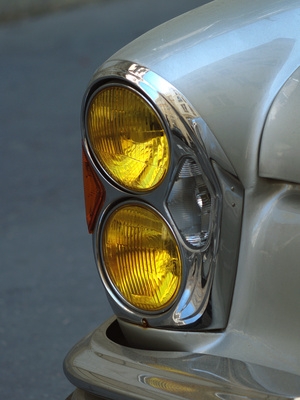
Buffing car paint helps restore the natural shine in the paint and is the best way to blend patchy paint or camouflage a touch-up job. Single-stage car paint is tricky to buff, since it does not have a protective clearcoat. When you discover runs and blotchy surface imperfections called "orange peel" in your new single-stage paint job, the only way to smooth them is through buffing. Go slow when buffing, since the paint has fewer layers than a car that's been painted with enamel and clearcoat.
Examine your car, running your fingers over the paint job. Getting a good idea before you begin of where the car's paint job is rough can help you when buffing.
Immerse 2000-grit wet sandpaper in a bucket of water. Remove it, then rub the sandpaper over your car, working in long back-and-forth strokes. Do not move in jerky motions and do not exert too much pressure. Work across the entire car in this manner. Rinse the car when you have finished. You are ready to buff.
Dry the car with clean cotton cloths. Do not use any cloth that has touched the ground, since grit and dust will scratch your buff job.
Squirt polishing compound onto a foam pad. Bring the foam pad to the surface of your car, then move it back and forth. Apply polishing compound over the entire surface of your car, though you can choose to begin and finish one side at a time before continuing.
Rub the polishing compound off with a clean cotton towel once an area is saturated. Wiping the compound off will restore the shine to your car.
Wipe off all of the polishing compound in this manner. When you have finished, your new single-stage paint job will be glossy and you won't be able to see any drips in the paint finish.